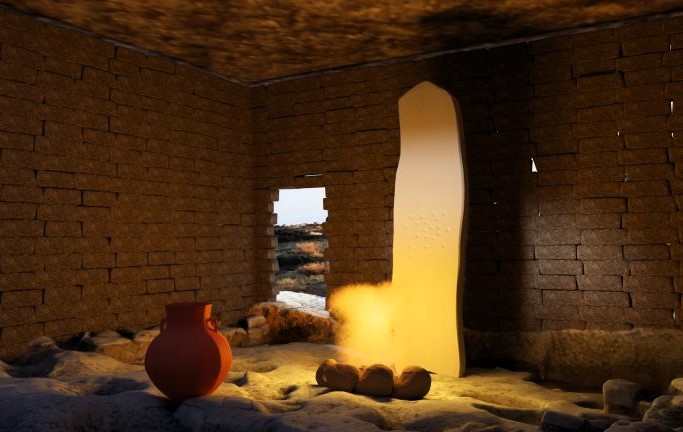Scientists have discovered a 4,000-year-old temple with a mysterious monolith in the middle.
The ancient settlement is located on a limestone terrace over 300 feet above sea level on the Mediterranean island of Cyprus.
Discoverers called it the oldest recorded sacred building on the island.
READ MORE: Huge castle built by locals with 1.5 tons of cardboard boxes – only to smash it down next day
The temple was unearthed at the archaeological site of Erimi.
The research project is led by Luca Bombardieri of the University of Siena in Italy in collaboration with the Department of Antiquities of Cyprus.
Bombardieri said: “Recent excavations have led to the discovery of the oldest sacred building attested in Cyprus, whose ritual function and ideological value seem to be of particular significance.
“During the Middle Bronze Age (around 2000 to 1600 BC), a community of artisans chose to settle on the Erimi Hill and build a community living space with very particular characteristics.”
In one section of the site, Bombardieri’s team discovered a room with a mysterious monolith measuring 7ft in height.
The structure was polished and completely smooth with a circular motif of small cups in the middle.
Bombardieri said: “The monolith, which originally stood in the centre of the room, collapsed onto the floor and destroyed a large amphora placed at its feet in front of a small circular hearth.
“The peculiarities of this room… indicate that it is a small sacred space.
“The activity that supported the community economically, also involved its members ideologically and symbolically.”
The remains of a young woman were also reportedly found “sealed” inside the building.
The woman’s skull had been smashed and a heavy stone was placed upon her chest “as if to keep her still”.
Bombardieri believes she may have been killed “for issues linked to maternity” and that her death “may be linked to other cases recorded in the past in other parts of Cyprus”.
A visual artist reconstructed what the sacred space would have looked like at the time of its use.
Archaeological research first began at the site 15 years ago, as reported on What’s the Jam.
The research also involves the support of INFN-Labec, the Mediterranean Archaeological Fund, the Aegean Prehistory Institute, the Italian Ministry of Foreign Affairs and International Cooperation, and the Italian Embassy in Cyprus.
